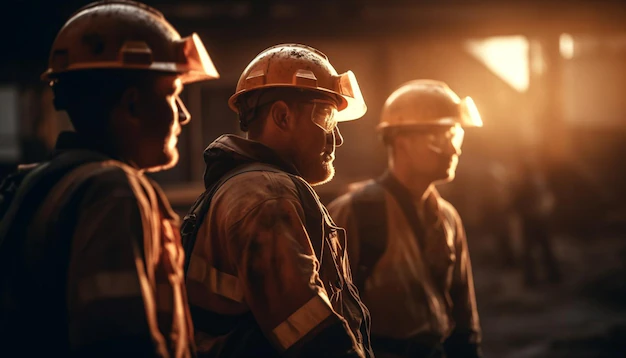Who Is Responsible For Safety In The Workplace?
by Ankita Tripathy Business Published on: 04 January 2024 Last Updated on: 30 March 2024

Ensuring the health and safety of employees in the workplace is an important responsibility. The onus of this responsibility always lies with the employer, and by extension, all managers in the organization.
Neglecting this responsibility can result in the injury or death of workers, so it is imperative that workplace safety be handled in a professional manner. In the United States, the Occupational Safety and Health Administration (OSHA) sets the standards of safety and health to be followed by workplaces.
This article will discuss the legal and ethical obligations regarding workplace safety and look at some ways to improve safety in the workplace.
Why Maintaining a Safe Working Environment is Vital
It is extremely important to maintain a healthy and safe environment in the workplace. All employers must take measures to ensure that their employees are protected from harm while on the job – for both legal and ethical reasons.
This includes identifying and assessing potential hazards in the workplace and providing the needed safety equipment and training. It also involves implementing safety measures and establishing safety standards. The effectiveness of safety measures should also be evaluated and monitored on a regular basis.
It is imperative that employers help protect the well-being and physical safety of their employees. Not only is this important for employee health, but work-related injuries can impact worker productivity and company reputation. They can also result in complex insurance claims and even lawsuits, according to Las Vegas workers’ compensation attorneys.
Having an unsafe working environment can also lead to low morale among workers, reduced job satisfaction, and increased employee turnover. Potential employees might be dissuaded from joining an organization with low safety standards. Businesses that give due diligence to worker health and safety are regarded as trustworthy and responsible.
Responsibilities of the Employer

Employers have a legal and moral responsibility for the health and safety of their employees in the workplace. They need to ensure that employees can come to work and do their job safely. Below are some of the specific safety responsibilities of an employer.
1. Identifying and Assessing Hazards
Employers need to ensure that the workplace is free from hazards that could cause harm to their employees. Workplace hazards can include chemical hazards, electrical hazards, physical hazards, operational hazards, and beyond. Other hazards aren’t so apparent, such as sexual harassment or workplace bullying.
Part of this process involves performing regular assessments to identify potential hazards and evaluating the environment to proactively address risks.
2. Establishing Safety Standards
Employers are responsible for developing and consistently enforcing safety standards. It’s important to keep these policies updated regularly so that they align with regulations and industry best practices. These safety standards and policies should include emergency procedures, protocols for dealing with hazardous substances, and accident reporting procedures.
3. Providing Safety Equipment
Ensuring the availability and proper functioning of safety equipment is paramount. Employers need to supply relevant personal protective equipment (PPE) and guarantee that employees are trained in its correct usage. It’s also important to ensure that machinery and equipment are functioning and that measures are in place to prevent injuries and mishaps.
4. Safety Audits
Employers can further enhance workplace safety by conducting regular safety audits. These audits involve a comprehensive assessment of the workplace environment to identify potential hazards and ensure compliance with safety standards. Regular audits demonstrate a commitment to continuous improvement in safety practices, leading to a safer and healthier work environment.
5. Training and Education
Comprehensive safety training sessions are essential. Employees should be educated on safety protocols, emergency response procedures, and the proper use of safety equipment, fostering a culture of awareness and responsibility.
Employers are required to train employees so that they understand the risks associated with their work and know how to work effectively. Employees must know how to use protective gear, how to work safely and what are the emergency procedures in case there is an accident.
6. Legal Compliance
From a legal perspective, there are a few scenarios that companies should be wary of. Although workers’ compensation typically protects an employer from being sued for a work injury, they aren’t completely in the clear.
If an employer’s recklessness or gross negligence causes an employee injury or death, they can be held liable. Additionally, if an employee files a workers’ compensation claim or reports a safety violation, it is illegal for their employer to retaliate against them in any way.
Responsibilities of the Employee
Employees also have some responsibility to maintain a healthy and safe working environment, but not nearly as much as the employer. Employees must follow directives regarding workplace health and safety, report unsafe conditions to their employer, and use protective equipment when needed.
Employees should report accidents as well as close calls to their employer. Reporting an incident that did not result in an injury but could have can help employers mitigate the situation before someone does get hurt. To stay as safe as possible, employees should take responsibility for their safety by participating in training sessions and reading safety manuals.
Responsibilities of Government Agencies
Government agencies such as the Occupational Safety and Health Administration (OSHA), the National Institute for Occupational Safety and Health (NIOSH), the Environmental Protection Agency (EPA), the Department of Transportation (DOT), and the Department of Labor (DOL) are some of the local and federal agencies that are concerned with maintaining health and safety standards. They issue fines for safety violations that they find, either through a report or inspection.
Responsibilities of Industry and Trade Associations

Industry and trade associations also help enhance health and safety standards in the workplace by providing documents for guidance and best practices, offering training and education, advocating for policies and regulations, conducting research, and providing networking opportunities. Together, these efforts elevate industry standards and create safer environments for all.
Working Together for a Safer Workplace
From the above, it is clear that the responsibility for health and safety in the workplace is a shared one, with employers, employees, government agencies, and industry and trade associations all playing their part in this process. The result of all this is that workers’ health and safety are ensured and protected.
Read Also:







































































































